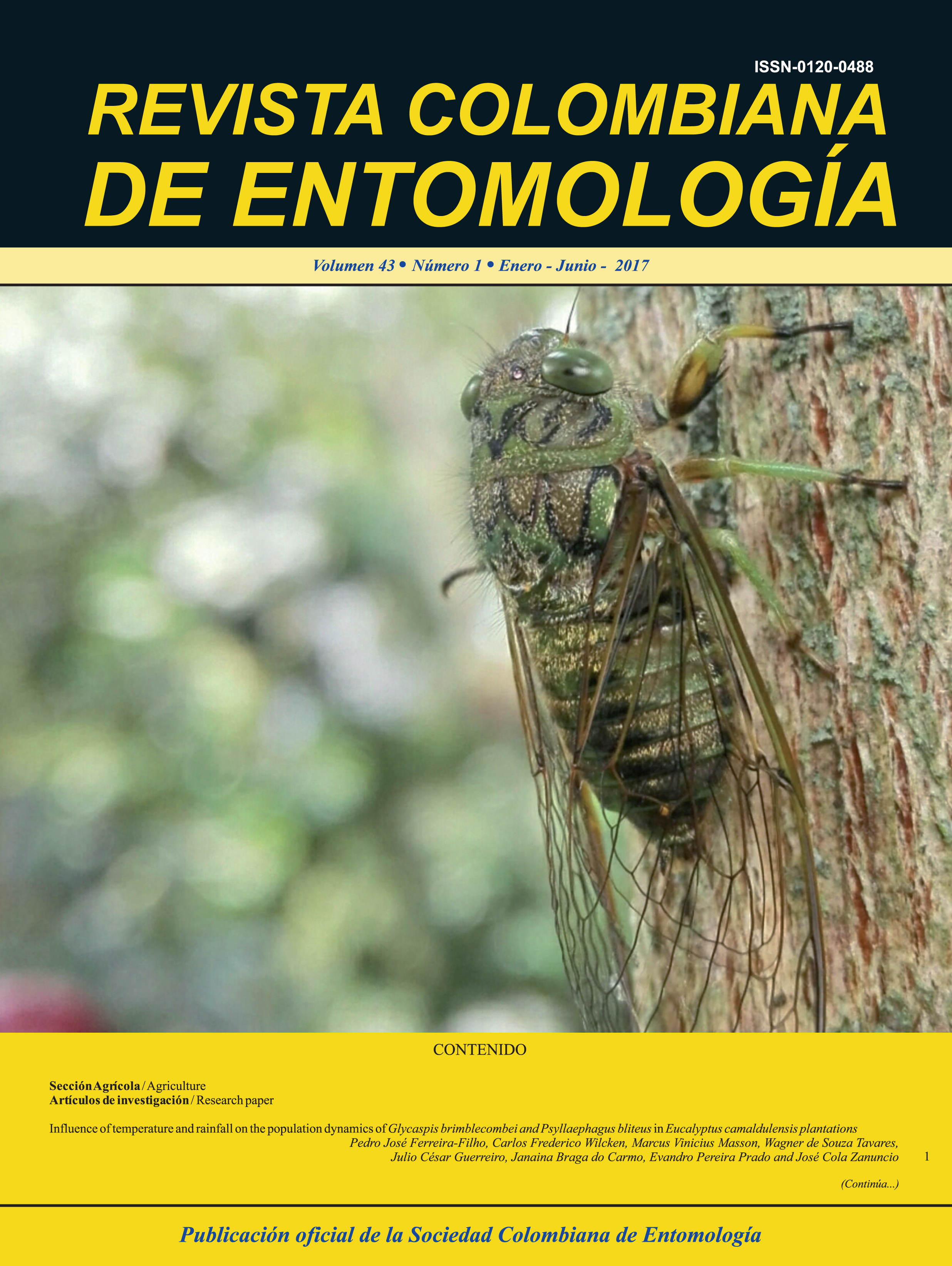Behavior and diversity of floral visitors to Campomanesia adamantium (Myrtaceae)
Contenido principal del artículo
Considering the important roles of pollinators in ecosystem services, their identification and studies of their behavior would be extremely important to efforts directed towards their preservation and management. With the aim of examining the diversity and behavior of the floral visitors to Campomanesia adamantium (Cambessédes) O. Berg
(“guavira”) and how they act in the pollination process, a total of 31 species belonging to the orders Hymenoptera (79.30 %), Coleoptera (11.34 %), Diptera (9.1 %), and Hemiptera (0.24 %) were identified. Among the Hymenoptera, africanized Apis mellifera, Brachygastra lecheguana, and Trachymyrmex sp. were considered dominant. Foraging was
most intense between 07:00 and 10:00 h, with decreased activity after 13:00 h. The insects visited the plants in search of pollen and nectar, with pollen being the principal resource offered. Among the pollinators, africanized Apis mellifera stood out due to their behavior, frequency of visitation, abundance (being responsible for 53.24 % of all floral visits),
and their constant presence on C. adamantium flowers during the entire observation period. Other insects (wasps, ants, and coleopterans) were associated with floral tissue predation.
- Pollination
- Ecosystem services
- Africanized bees
- Guavira
Descargas

Esta obra está bajo una licencia internacional Creative Commons Atribución-NoComercial-CompartirIgual 4.0.
Los autores conservan los derechos patrimoniales sobre su trabajo y son responsables de las ideas emitidas en ellos. Una vez un manuscrito sea aprobado para publicar se solicita a los autores una licencia de publicación por el término de la protección legal, para todos los territorios que permite el uso, difusión y divulgación de los mismos.





